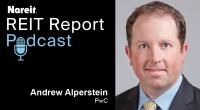About Nareit
Nareit serves as the worldwide representative voice for REITs and real estate companies with an interest in U.S. real estate. Nareit’s members are REITs and other real estate companies throughout the world that own, operate, and finance income-producing real estate, as well as those firms and individuals who advise, study, and service those businesses.








